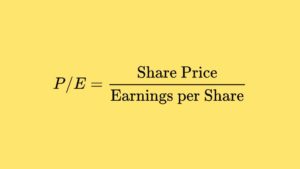At the close of Samvat 2077, the domestic equity market lost about Rs.13 lakh crore of the overall market cap. Still, Samvat 2077 gave over 35% return in terms of Sensex. However, the overall market added over Rs.90 lakh crore of the market cap during the year Samvat 2077 – that is, the overall market cap jumped 53% while the Sensex gained only 35%. This indicates that small and mid-cap stocks added a lot more wealth than the stocks of broad-based indices. Samvat 2077 has been the best year for retail investors in terms of overall gains made.
However, Samvat 2078 is most unlikely to give returns similar to Samvat 2077. It is very difficult to expect even half of the overall gains made in Somvat 2077 in terms of overall market cap. Unfortunately, the FIIs started selling the Indian equities at the fag end of Somvat 2077 and many international brokerages have also downgraded the Indian equity markets. Further, Samvat 2078 is likely to start with mega IPOs from many loss-making or meagre profit-making technology companies which would partly exhaust liquidity available to the secondary markets. By the close of Samvat 2078, the US Fed also would have withdrawn almost fully asset purchases and also started hiking the benchmark interest rates.
Thus, the domestic market is most unlikely to give any big returns in Samvat 2078 but a nominal return of around 15% is possible. Despite selling by the FIIs, downgrading of Indian markets by some foreign institutional investors, and reversal of monetary policy by the US Fed, the market is not likely to fall in Samvat 2078.
FIIs have become quite smart and they understood the risk of any panic selling of Indian equities. They may not resort to a panic selling of equities in Samvat 2078. If they do any big selling to the tune of more than $10 billion to $15 billion in a short span of time, they would lose more than 30% of their investment value in the Indian markets. They have learned big lessons from the Post Lehman period and again in March 2020. Also, the economic outlook for India remains robust. Many macroeconomic parameters like Business confidence, government’s tax revenues, and fiscal conditions, exports, crude oil import in volume terms, monsoon performance, etc remain very strong. Also, there is a continued flood of new investors into the equity markets – in October month alone, over 35 lakh new investors registered on BSE. Nearly 3 crore new equity investors were registered in the last 12 months alone.
Thus, investors need not expect any major fall in the markets in Samvat 2078 unless there are frequent massive waves of coronavirus in the country. At the same time, the New Year is unlikely to give any substantial returns similar to Samvat 2077. However, Samvat 2078 would lay a foundation for the mega Bull Run over the next 3 to 4 years. Around $23 trillion of global monetary and fiscal stimuluses already infused in the system and over 4 crore new investors, who entered the Indian stock market for the first time since the pandemic started, would drive this anticipated mega long-term bull run. And this Bull Run once again would be dominated by the small and mid-cap as these 4 crore new retail investors are likely to prefer this space going by the recent wealth creation experience.
Investors may use the Samvat 2078 to create a long-term portfolio for solid wealth creation as the coming year, though expected to give a nominal return, is also set to see a lot of volatility. Focus on quality small and mid-cap stocks without losing valuation comfort. Consider investing in businesses directly related to stock exchanges, the shipping industry, and public sector banks, which have relatively lower non-performing assets. A massive jump in the investor base would provide solid revenue and profit growth opportunities for the stock market-related businesses.
A significant spurt expected in the banking industry’s credit growth would lead to improvement in the credit growth of public sector banks. Robust shipping freight rates are expected to continue in Samvat 2078 also due to the shortage of ships. Then consider PSUs engaged in logistics and minerals as they are non-strategic in nature and hence, the government may opt for strategic sale of these companies to the private sector. Once these companies land in the hands of the private sector, there would be substantial upgrades in their valuation. Also, evaluate pharma stocks as many of them have fallen and trade close to 52-week lows. However, be cautious about valuation bubbles and small caps which have changed names and also business models several times in the last 10 to 15 years.
























